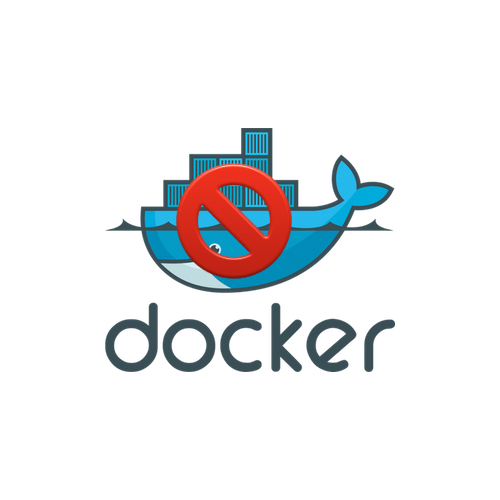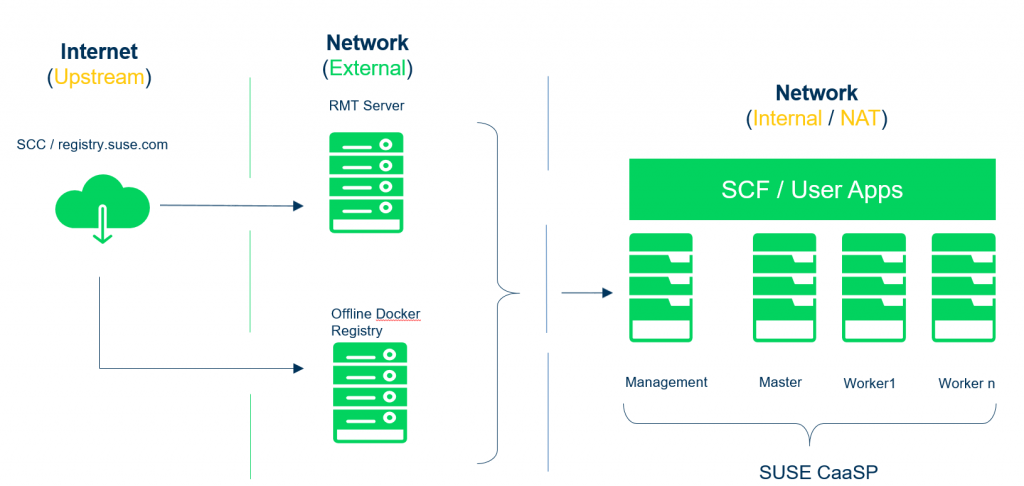Neo4j is a highly scalable, robust native graph database. $ docker images REPOSITORY TAG IMAGE ID CREATED SIZE registry 2.7 5c4008a25e05 40 hours ago 26.2MB ubuntu latest f63181f19b2f 5 weeks ago 72.9MB. Finally pull the image from our local registry and verify that it is now pulled to our local instance of Docker. Pushing a Docker container image to Docker Hub. To push an image to Docker Hub, you must first name your local image using your Docker Hub username and the repository name that you created through Docker Hub on the web. You can add multiple images to a repository by adding a specific: to them (for example docs/base:testing). A Docker image is a read-only template that defines your container. The image contains the code that will run including any definitions for any libraries and dependancies your code needs. A Docker container is an instantiated (running) Docker image. AWS provides Amazon Elastic Container Registry (ECR), an image registry for storing and quickly.
One of the things that makes the Docker Platform so powerful is how easy it is to use images from a central location. Docker Hub is the premier Image Repository with thousands of Official Images ready for use. It’s also just as easy to push your own images to the Docker Hub registry so that everyone can benefit from your Dockerized applications.
But in certain scenarios, you might not want to push your images outside of your firewall. In this case you can set up a local registry using the open source software project Distribution. In this article we’ll take a look at setting up and configuring a local instance of the Distribution project where your teams can share images with docker commands they already know: docker push and docker pull.
Prerequisites
To complete this tutorial, you will need the following:
- Free Docker Account
- You can sign-up for a free Docker account and receive free unlimited public repositories
- Docker running locally
Running the Distribution service
The Distribution project has been packaged as an Official Image on Docker Hub. To run a version locally, execute the following command:
$ docker run -d -p 5000:5000 --name registry registry:2.7
The -d flag will run the container in detached mode. The -p flag publishes port 5000 on your local machine’s network. We also give our container a name using the --name flag. Check out our documentation to learn more about these and all the flags for the docker run command.
Pushing and Pulling from a local registry
Now that we have our registry running locally, let’s tail the container’s logs so we can verify that our image is being pushed and pulled locally:
$ docker logs -f registry
Open another terminal and grab the Official Ubuntu Image from Docker Hub. We’ll use this image in our example below:
$ docker pull ubuntu
To push to or pull from our local registry, we need to add the registry’s location to the repository name. The format is as follows: my.registry.address:port/repositoryname.
In our example, we need to replace my.registry.address.port with localhost:5000 because our registry is running on our localhost and is listening on port 5000. Here is the full repository name: localhost:500/ubuntu. To do this, we’ll run the docker tag command:
$ docker tag ubuntu localhost:5000/ubuntu
Now we can push to our local registry.
$ docker push localhost:5000/ubuntu
NOTE:
Docker looks for either a “.” (domain separator) or “:” (port separator) to learn that the first part of the repository name is a location and not a user name. If you just had localhost without either .localdomain or :5000 (either one would do) then Docker would believe that localhost is a username, as in localhost/ubuntu or samalba/hipache. It would then try to push to the default Registry which is Docker Hub. Having a dot or colon in the first part tells Docker that this name contains a hostname and that it should push to your specified location instead.
Switch back to the terminal where our registry logs are being tailed. If you review the logs, you will see entries displaying the request to save our ubuntu image:
Now let’s remove our localhost:5000/ubuntu image and then pull the image from our local repository to make sure everything is working properly.
First print a list of images we have locally:
Now remove the localhost:5000/ubuntu:latest image from our local machine:


Let’s double check the image has been removed:
Finally pull the image from our local registry and verify that it is now pulled to our local instance of Docker.
Summary
In this article, we took a look at running an image registry locally. We also pulled an image for Docker Hub, tagged the image with our local registry and then pushed that image to our local registry running Distribution.
If you would like to learn more about the Distribution project, head on over to the open source project homepage on GitHub and be sure to check out the documentation.
Estimated reading time: 7 minutes
Docker Hub repositories allow you share container images with your team,customers, or the Docker community at large.
Docker images are pushed to Docker Hub through the docker pushcommand. A single Docker Hub repository can hold many Docker images (stored astags).
Creating repositories
To create a repository, sign into Docker Hub, click on Repositories thenCreate Repository:
When creating a new repository:
- You can choose to put it in your Docker ID namespace, or in anyorganization where you are an owner.
- The repository name needs to be unique in that namespace, can be twoto 255 characters, and can only contain lowercase letters, numbers, hyphens (
-),and underscores (_). - The description can be up to 100 characters and is used in the search result.
- You can link a GitHub or Bitbucket account now, or choose to do it later inthe repository settings.
After you hit the Create button, you can start using docker push to pushimages to this repository.
Pushing a Docker container image to Docker Hub
To push an image to Docker Hub, you must first name your local image using yourDocker Hub username and the repository name that you created through Docker Hubon the web.
You can add multiple images to a repository by adding a specific :<tag> tothem (for example docs/base:testing). If it’s not specified, the tag defaultsto latest.
Name your local images using one of these methods:
Gitlab Download Docker Image From Registry
- When you build them, using
docker build -t <hub-user>/<repo-name>[:<tag>] - By re-tagging an existing local image
docker tag <existing-image> <hub-user>/<repo-name>[:<tag>] - By using
docker commit <existing-container> <hub-user>/<repo-name>[:<tag>]to commit changes
Now you can push this repository to the registry designated by its name or tag.
The image is then uploaded and available for use by your teammates and/orthe community.
Private repositories
Private repositories let you keep container images private, either to yourown account or within an organization or team.
To create a private repository, select Private when creating a repository:
You can also make an existing repository private by going to its Settings tab:
You get one private repository for free with your Docker Hub user account (notusable for organizations you’re a member of). If you need more privaterepositories for your user account, upgrade your Docker Hub plan from yourBilling Information page.
Once the private repository is created, you can push and pull images to andfrom it using Docker.
Note: You need to be signed in and have access to work with aprivate repository.
Note: Private repositories are not currently available to search throughthe top-level search or docker search.
You can designate collaborators and manage their access to a privaterepository from that repository’s Settings page. You can also toggle therepository’s status between public and private, if you have an availablerepository slot open. Otherwise, you can upgrade yourDocker Hub plan.
Collaborators and their role
A collaborator is someone you want to give access to a private repository. Oncedesignated, they can push and pull to your repositories. They are notallowed to perform any administrative tasks such as deleting the repository orchanging its status from private to public.

Docker Download Image From Registry Free
Note
Docker Download Image From Registry Mac
A collaborator cannot add other collaborators. Only the owner ofthe repository has administrative access.
You can also assign more granular collaborator rights (“Read”, “Write”, or“Admin”) on Docker Hub by using organizations and teams. For more informationsee the organizations documentation.
Viewing repository tags
Docker Hub’s individual repositories view shows you the available tags and thesize of the associated image. Go to the Repositories view and click on arepository to see its tags.
Image sizes are the cumulative space taken up by the image and all its parentimages. This is also the disk space used by the contents of the .tar filecreated when you docker save an image.
To view individual tags, click on the Tags tab.

An image is considered stale if there has been no push/pull activity for morethan 1 month, i.e.:
- It has not been pulled for more than 1 month
- And it has not been pushed for more than 1 month
A multi-architecture image is considered stale if all single-architecture imagespart of its manifest are stale.
To delete a tag, select the corresponding checkbox and select Delete from theAction drop-down list.
Note
Only a user with administrative access (owner or team member with Adminpermission) over the repository can delete tags.
Select a tag’s digest to view details.
Searching for Repositories
You can search the Docker Hub registry through itssearch interface or by using the command line interface. Searching can findimages by image name, username, or description:
There you can see two example results: centos and ansible/centos7-ansible.The second result shows that it comes from the public repository of a user,named ansible/, while the first result, centos, doesn’t explicitly list arepository which means that it comes from the top-level namespace forofficial images. The / character separatesa user’s repository from the image name.
Once you’ve found the image you want, you can download it with docker pull <imagename>:
You now have an image from which you can run containers.
Starring Repositories
Your repositories can be starred and you can star repositories in return. Starsare a way to show that you like a repository. They are also an easy way ofbookmarking your favorites.
Service accounts
A service account is a Docker ID used by a bot for automating the build pipelinefor containerized applications. Service accounts are typically used in automatedworkflows, and do not share Docker IDs with the members in the Team plan.
Download Docker Image From Azure Container Registry
To create a new service account for your Team account:
- Create a new Docker ID.
- Create a team in your organization and grant it read-only access to your private repositories.
- Add the new Docker ID to your organization.
- Add the new Docker ID to the team you created earlier.
- Create a new personal access token (PAT) from the user account and use it for CI.
To create a new service account for your Pro account:
- Create a new Docker ID.
- Click Repositories from the main menu.
- Select a repository from the list and go to the Collaborators tab.
- Add the new Docker ID as a collaborator.
- Create a new personal access token (PAT) from the user account and use it for CI.
If you want a read-only PAT just for your open source repos, or to accessofficial images and other public images, you do not have to grant any access permissions to the new Docker ID.
Note
Service accounts are still subject to Docker’s fair pull limit policy. To learn more about these limits, see our Resource Consumption Updates FAQ.
Docker, docker, trusted, registry, accounts, plans, Dockerfile, Docker Hub, webhooks, docs, documentation